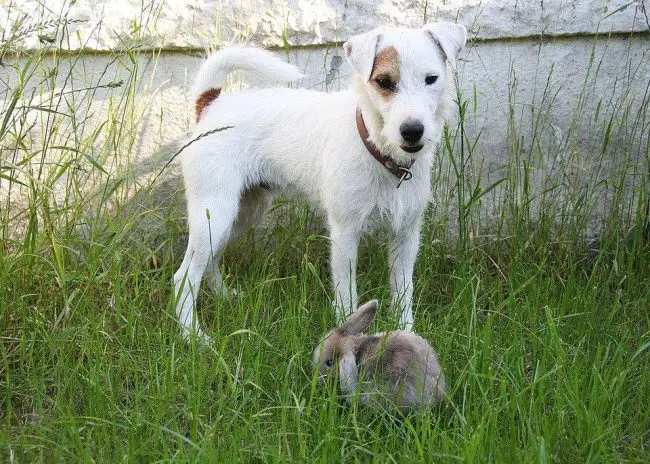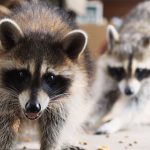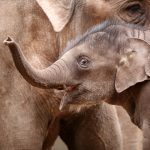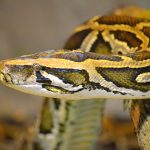Domestic Rabbits: More Than Pets
Rabbits are often associated with being cute and cuddly pets, but there’s much more to them than meets the eye. Domestic rabbits have a rich history and fascinating characteristics that make them an intriguing subject for wildlife enthusiasts like yourself. In this section, we will explore the hidden side of domestic rabbits and discover their unique qualities.
Introduction to Domestic Rabbits
Domestic rabbits, also known as pet rabbits, are descendants of wild rabbits. Over the years, these small mammals have been selectively bred for various traits, resulting in a wide range of breeds with distinct appearances and temperaments. If you’re interested in learning more about different rabbit breeds, check out our article on rabbit breeds.
The Hidden Side of Domestic Rabbits
While domestic rabbits may seem like ordinary pets, they possess intriguing characteristics and behaviors that are worth exploring. For instance, did you know that rabbits have a lifespan of around 8 to 12 years? This longevity makes them a long-term commitment and requires proper care and attention. To learn more about the lifespan of domestic rabbits, visit our article on rabbit lifespan.
Domestic rabbits also exhibit social behavior and communication techniques that are unique to their species. They are highly social animals and form strong bonds with their human caregivers and other rabbits. They communicate through various means, including body language, vocalizations, and scent marking. Understanding these forms of communication can help you better interact with your pet rabbit and meet their social needs.
By delving into the hidden side of domestic rabbits, you’ll gain a deeper appreciation for these captivating creatures. From their origins and history to their distinct characteristics and behaviors, domestic rabbits offer a world of discovery for wildlife enthusiasts like yourself. While they may not be found in the wild like their wild rabbit counterparts, understanding the intricacies of domestic rabbits can enhance your understanding of the broader rabbit family. To learn more about wild rabbits, make sure to check out our article on wild rabbits.
Continue your exploration of domestic rabbits by delving into their origins and history, as well as their physical traits and dietary needs. By understanding the hidden side of domestic rabbits, you’ll gain valuable insights into their care and well-being.
Origins and History
The fascinating story of domestic rabbits begins with their wild ancestors and the process of domestication. Understanding the origins and history of domestic rabbits provides valuable insights into their characteristics and behavior.
Wild Ancestors of Domestic Rabbits
Domestic rabbits, also known as Oryctolagus cuniculus, descended from wild European rabbits. These wild ancestors inhabited various regions across the Mediterranean and Western Europe. They adapted to diverse environments, including grasslands, forests, and even rocky terrains.
Wild rabbits lived in complex burrow systems known as warrens, which provided shelter and protection from predators. Their natural instincts for burrowing and escaping danger still manifest in domestic rabbits today.
Domestication of Rabbits
The domestication of rabbits began thousands of years ago. Initially, humans sought rabbits for their meat and fur. Over time, people realized that rabbits could also serve as companions and pets.
Historical records indicate that the Romans were among the first to raise rabbits for various purposes, including food, fur, and entertainment. The popularity of rabbits as pets grew during the Middle Ages and the Renaissance period. Eventually, different rabbit breeds were developed to suit specific needs and preferences.
By selectively breeding rabbits with desirable traits, such as docility and unique coat colors, humans played a significant role in shaping the characteristics of domestic rabbits. Today, there are numerous rabbit breeds, each with distinct physical traits and temperaments. Explore our article on rabbit breeds to learn more about the diverse variety found in domestic rabbits.
Understanding the origins and history of domestic rabbits not only allows us to appreciate their journey but also helps us comprehend their unique needs and behaviors. From their wild ancestors to their domesticated forms, rabbits have captivated humans for centuries with their charm and companionship.
Characteristics and Behavior
Domestic rabbits exhibit a fascinating array of physical traits and engage in intricate social behavior and communication. Understanding these aspects can provide valuable insights into the world of domestic rabbits.
Physical Traits of Domestic Rabbits
Domestic rabbits come in various shapes, sizes, and colors due to selective breeding. While there is a wide range of rabbit breeds, they generally share some common physical characteristics. Domestic rabbits typically have a compact and rounded body, with long ears and a fluffy tail. Their fur can vary in texture and length, ranging from short and sleek to long and dense. Each breed has its own unique set of physical traits, making them distinct from one another. For a more detailed exploration of rabbit breeds, visit our article on rabbit breeds.
Another important aspect of domestic rabbit physical traits is their lifespan. On average, domestic rabbits live for 8 to 12 years, depending on factors such as breed, diet, and overall care. However, with proper care and attention, some rabbits have been known to exceed 15 years of age. To learn more about rabbit lifespan and how to ensure your rabbit lives a long and healthy life, check out our article on rabbit lifespan.
Social Behavior and Communication
Domestic rabbits are highly social animals that thrive on companionship. In the wild, rabbits live in complex social structures, and this social nature remains ingrained in domesticated individuals. Rabbits are known for their ability to form strong bonds with both humans and other animals, including other rabbits. It is important to provide them with opportunities for social interaction and mental stimulation.
Rabbits communicate through a combination of body language and vocalizations. They use various gestures, such as ear position, thumping of hind legs, and body postures, to convey their feelings and intentions. For instance, when a rabbit feels threatened, it may flatten its body and lay its ears flat against its back. On the other hand, a relaxed and content rabbit may display a more upright posture with its ears erect. Understanding and interpreting these cues can help you better understand your rabbit’s emotions and needs.
In addition to body language, rabbits also communicate through vocalizations. They can make various sounds, including purring, growling, honking, and even screaming in extreme cases. These vocalizations serve as a means of expressing emotions or warnings to other rabbits or humans. By observing and listening to your rabbit’s vocalizations, you can gain further insight into their state of mind.
Understanding the physical traits and social behavior of domestic rabbits is essential for providing them with a suitable and enriching environment. By catering to their specific needs, you can ensure that your domestic rabbit thrives both physically and emotionally. To learn more about wild rabbits and their behavior, visit our article on wild rabbits.
Understanding Domestic Rabbit Care
Owning a domestic rabbit comes with the responsibility of providing proper care and meeting their specific needs. Understanding the dietary needs, enclosures and habitat, and health and wellness of domestic rabbits is essential to ensure their overall well-being.
Dietary Needs of Domestic Rabbits
A balanced and nutritious diet is crucial for the health of domestic rabbits. Their diet primarily consists of hay, fresh vegetables, pellets, and limited quantities of fruits. Hay is an essential component as it provides necessary fiber for their digestive system. Fresh vegetables, such as leafy greens and carrots, offer important vitamins and minerals. Pellets are designed to provide additional nutrients, but should be given in moderation. Fruits can be given as occasional treats due to their higher sugar content. It’s important to remember that each rabbit’s dietary needs may vary, so consulting a veterinarian is recommended for personalized advice. For more information on specific rabbit breeds and their dietary requirements, visit our article on rabbit breeds.
| Food Type | Quantity |
|---|---|
| Hay | Unlimited |
| Fresh Vegetables | 1-2 cups per day |
| Pellets | 1/8 – 1/4 cup per day |
| Fruits | Occasional treats |
Enclosures and Habitat
Creating a suitable enclosure and habitat is essential for the well-being of domestic rabbits. They require spacious and secure living areas that allow for natural movement and exploration. An ideal enclosure should have enough space for the rabbit to stretch out, stand up on their hind legs, and hop around freely. Providing hiding spots, tunnels, and platforms can also enrich their environment. Additionally, it’s important to ensure that the enclosure has proper ventilation and protection from extreme temperatures. For more information on the lifespan of domestic rabbits, check out our article on rabbit lifespan.
Health and Wellness
Maintaining the health and wellness of domestic rabbits involves regular care and veterinary check-ups. Grooming is an important aspect and includes brushing their fur to prevent matting, trimming their nails, and cleaning their ears. Regular veterinary examinations can help detect any potential health issues early on. Vaccinations, as recommended by a veterinarian, are also crucial for preventing common rabbit diseases. It’s important to be aware of any changes in behavior, appetite, or physical appearance, as these can be indicators of underlying health problems. Providing a clean and safe living environment, along with a well-balanced diet, helps support the overall health and well-being of domestic rabbits.
By understanding the dietary needs, creating suitable enclosures and habitats, and prioritizing their health and wellness, you can ensure that your domestic rabbit leads a happy and healthy life. For more information on wild rabbits, visit our article on wild rabbits.
Environmental Impact and Conservation
When considering domestic rabbits, it’s important to be aware of their potential environmental impact and the importance of responsible pet ownership in conservation efforts.
Ecological Concerns Related to Domestic Rabbits
While domestic rabbits are beloved pets for many, they can pose ecological concerns when they are released or escape into the wild. Domestic rabbits, which are descendants of wild rabbits, have the potential to establish feral populations in the environment. These feral populations can disrupt local ecosystems and impact native flora and fauna.
Domestic rabbits have a higher reproductive rate compared to their wild counterparts, which can result in population explosions if they are not properly managed. Their feeding habits can also affect vegetation, leading to changes in plant communities and potentially impacting other wildlife species that rely on those plants for food and habitat.
Responsible Pet Ownership and Conservation Efforts
To mitigate the negative environmental impact of domestic rabbits, responsible pet ownership is crucial. If you choose to have a domestic rabbit as a pet, it’s essential to take preventive measures to ensure they do not escape or are released into the wild. This includes providing secure enclosures and supervision during outdoor time.
Spaying or neutering your pet rabbit is another important step in responsible pet ownership. This helps to prevent unplanned litters and reduces the likelihood of rabbits being released or abandoned.
Additionally, being knowledgeable about the specific needs and care requirements of domestic rabbits is essential to ensure their well-being and to minimize any potential negative impacts on the environment. For more information on rabbit breeds and their specific characteristics, you can visit our article on rabbit breeds.
By understanding the potential ecological concerns related to domestic rabbits and actively practicing responsible pet ownership, we can contribute to conservation efforts and protect our native ecosystems. Remember, it is our collective responsibility to ensure that our actions as pet owners do not harm the environment or threaten wildlife populations. For more information on wild rabbits and their natural habitats, you can visit our article on wild rabbits.
Conservation efforts, both at the individual and community level, play a vital role in safeguarding the environment and preserving the delicate balance of our ecosystems. Together, we can make a positive impact and ensure a harmonious coexistence between domestic rabbits and the natural world.
Are Domestic Rabbits More Similar to Polar Bears or Grizzly/Black Bears in Terms of Genetics and Behavior?
Domestic rabbits share more genetic and behavioral similarities with grizzly/black bears than polar bears. Despite polar bear albinism explored being a tangential keyword, these bears possess little relevance. Rabbits and grizzly/black bears, both territorial and omnivorous, exhibit comparable behaviors. In genetics, the same holds true, as rabbits are more closely related to these bear species.
Rabbits in the Wild
While domestic rabbits have become beloved pets in many households, it’s important to recognize the differences between domestic and wild rabbits and understand the potential impact of domestic rabbits on wild populations.
Differences Between Domestic and Wild Rabbits
Domestic rabbits, bred for various traits and characteristics, have undergone significant changes compared to their wild counterparts. These differences can be observed in terms of physical attributes, behavior, and adaptability.
| Aspect | Domestic Rabbits | Wild Rabbits |
|---|---|---|
| Physical Traits | Diverse range of sizes, colors, and fur types due to selective breeding | Typically exhibit natural camouflage and adaptations for survival in specific habitats |
| Behavior | May be more docile and reliant on human care | Display natural instincts and behaviors required for survival in the wild |
| Adaptability | Often dependent on human-provided resources, such as food and shelter | Highly adaptable to various environments and can forage for food and create burrows |
Understanding the distinctions between domestic and wild rabbits is crucial in recognizing their respective roles within their habitats. If you’re interested in learning more about different rabbit breeds, you can explore our article on rabbit breeds.
The Impact of Domestic Rabbits on Wild Populations
The presence of domestic rabbits in areas where they are not native can have significant consequences for local ecosystems and native wildlife. Domestic rabbits, if released or escaped into the wild, can breed rapidly and compete with native species for resources such as food, burrows, and nesting sites. This competition can disrupt the balance of the ecosystem and potentially lead to the decline of native species.
Furthermore, domestic rabbits can introduce diseases and parasites to wild populations that may not have the necessary immunity. These diseases can spread rapidly, resulting in the decline or even extinction of vulnerable species.
To ensure the conservation and protection of native wildlife, it is crucial to promote responsible pet ownership. This includes preventing the release of domestic rabbits into the wild and taking appropriate measures to prevent breeding. Encouraging spaying and neutering of pet rabbits can help prevent accidental releases and limit their impact on wild populations.
By understanding the differences between domestic and wild rabbits and being mindful of their potential impact, we can work towards a harmonious coexistence between humans, domestic rabbits, and native wildlife. For more information on wild rabbits, you can refer to our article on wild rabbits.










